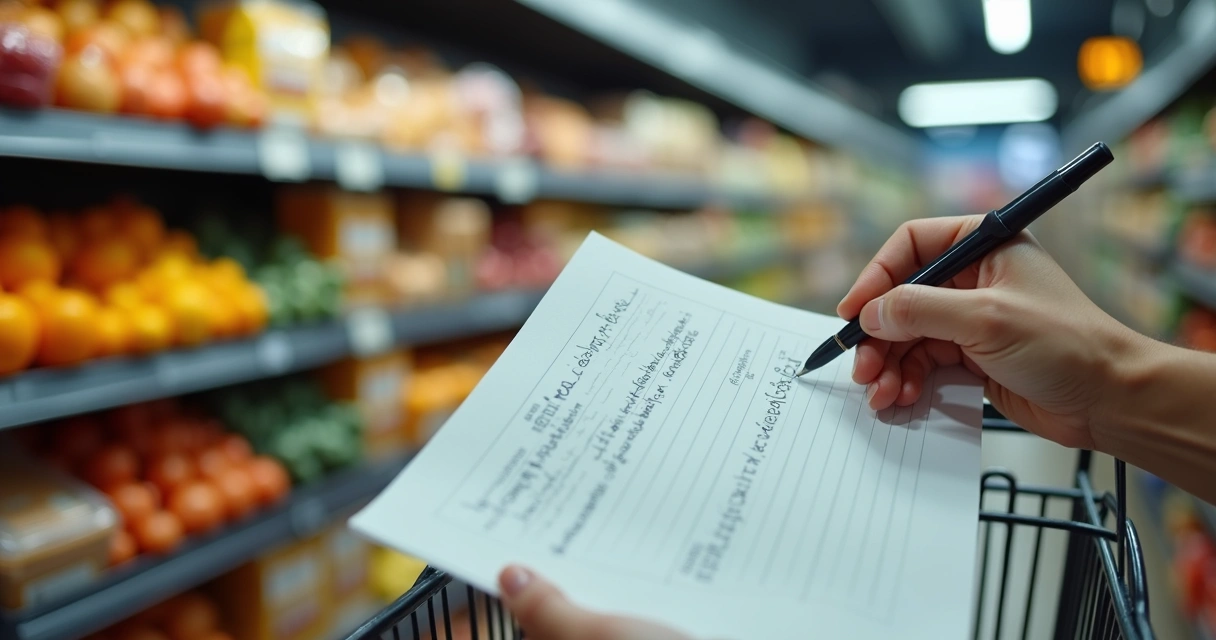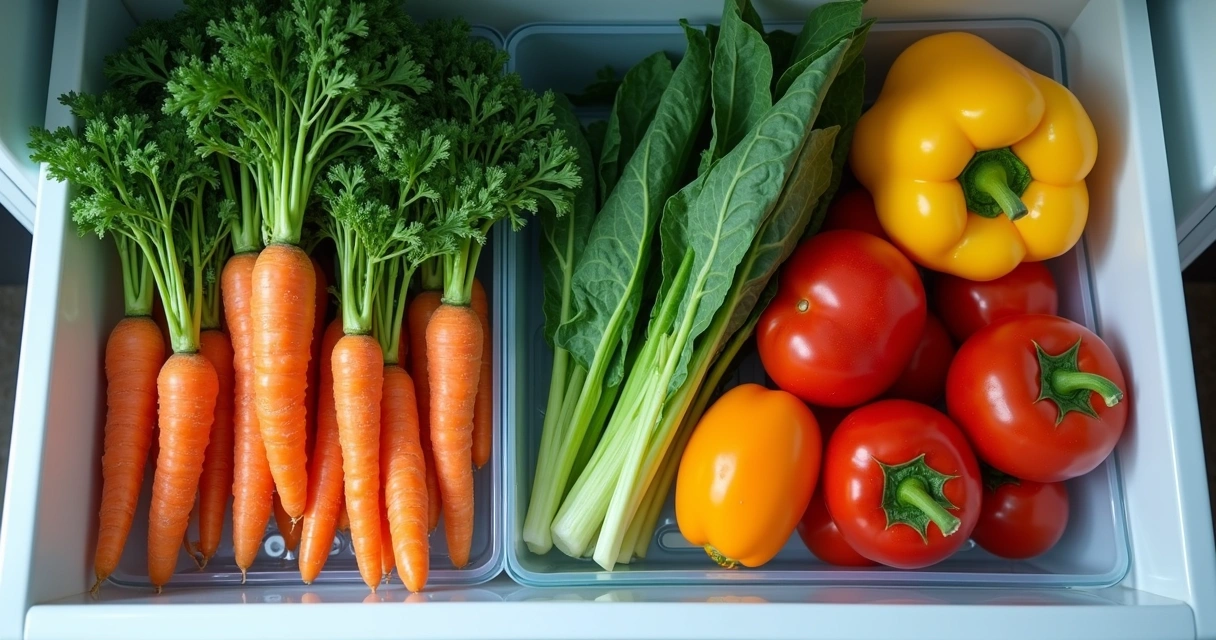Every time I check out at the grocery store, I get the same feeling. Did I really spend that much? I know I am not alone in this. Groceries quietly eat a huge chunk out of our budgets, and it can feel impossible to keep food costs down without sacrificing nutrition or variety. But with the right approach, I’ve found that it’s possible to eat well, waste less, and keep more money in my wallet.
Why grocery bills are rising
I used to think it was just my imagination, but no. Food prices have steadily crept up. Some of this is beyond our control – prices can climb for lots of reasons, and sometimes favorites are out of stock. But what we can control is how we shop and plan. I started asking myself, “Am I shopping smart?” More often than I’d like to admit, the honest answer was no.
Step one: Create a flexible meal plan
To be honest, for years I shopped with no list and a vague idea of what I wanted. Predictably, I bought things I didn’t really need. Now, I sit down once a week and sketch out meals before heading to the store.
- Choose dishes that share ingredients so nothing goes to waste.
- Pay attention to what you already have. I once bought three bags of carrots in as many weeks.
- Be flexible. If chicken is pricey, swap it for beans or eggs that week.
Planning meals around what’s affordable and on hand can lower your grocery bill right away.
Eat what you buy. Don’t buy what you won’t eat.
Step two: Make a shopping list (and stick to it)
This is simple but powerful. When I skip my list, I always grab at least a few extras. Lists force me to check my pantry, avoid duplicate buys, and not get distracted by every tempting display.
- Organize your list by section: produce, dairy, pantry, freezer. It speeds up shopping and helps avoid forgotten items (and impulse buys).
- Add only what you need for your meals plus basic staples.
If something’s “on sale” but not on the list, I slow down and really ask if I need it. Most times, the answer is no.

Step three: Buy “whole” foods over prepackaged foods
I learned a hard truth: the more a food is chopped, bagged, or prepared for you, the more you pay for it. Sometimes I am tempted to justify it: pre-cut veggies are “just more convenient.” But convenience comes at a cost. When I switched to whole carrots and heads of lettuce instead of bags of cut and washed produce, I saw the savings stack up.
- Buy blocks of cheese instead of shredded.
- Opt for whole fruits and vegetables.
- Choose dried beans and grains over canned or prepared versions when possible.
Whole foods are not only less expensive, but sometimes fresher and less processed.
Step four: Pay attention to unit prices
I used to glance at price tags and choose the smallest number. Then, I noticed that some packaging is sneaky: a bag twice the size might cost less per ounce than its smaller rival. Most stores help you by listing the ‘unit price’ next to the product – cents per ounce, grams or per liter.
Compare size, not just sticker price.
I started to bring a calculator or use my phone for quick math if the shelf tag wasn’t clear. Sometimes a bigger box is a better deal, sometimes not. There have even been weeks where buying two smaller packs with coupons beat the big package.
Step five: Master store specials, loyalty programs and coupons
Specials are everywhere, but shopping sales with a plan has made the biggest difference for me. Loyalty programs can add up in the long run, but I try not to get drawn in by flashy deals alone.
- Check for digital coupons and weekly ads.
- Stack store rewards with manufacturer discounts if possible.
- Don’t buy just because it’s “on sale.” If you won’t use it, it’s wasted money.
Using store specials and coupons thoughtfully is one of the easiest ways to cut costs on your regular purchases.
Step six: Buy in bulk, but only when it makes sense
Bags of rice, oats, or beans last forever – so when they go on sale, I buy big. But for fresh foods, I have to pause. I got burned a few times with bulk fruit or vegetables ending up in the compost bin. Now, I only buy in bulk if:
- I know I’ll use it all before it spoils.
- The price per unit is truly lower (calculate and be sure).
- I have storage space.
Bulk purchases can save a ton, but only if you are realistic about your habits and cooking plans.
Step seven: Cut down on food waste

The food you throw away may be silently killing your budget. At first, I thought my waste wasn’t that bad. But when I started tracking it, I saw it pile up. Here are changes I put in place:
- Keep leftovers visible – front of the fridge, not the back.
- Plan meals to use up aging produce.
- Freeze extras if you can’t finish them in time.
A little creativity with leftovers goes a long way. Sometimes, I turn roasted vegetables into soup, or make fried rice with what’s left in the fridge. “Eat down” your pantry before restocking.
Getting creative with substitutes
Cooking with swaps saves money and can be fun to try. If one ingredient is too costly, I often look for something similar. Out of ground beef? Try lentils or beans. No fresh herbs? Dried work just fine. I’ve also found recipes that let me use what I have at home. With the internet (and a pinch of imagination) it’s easier than I expected.
You don’t have to follow every recipe. Cook with what you’ve got.
Shopping habits that stretch your budget
- Eat before you shop. It keeps temptation for snacks in check.
- Try to shop alone – fewer impulse grabs get tossed in the cart.
- Use cash or a set limit card for groceries. It’s a sharp way to keep yourself honest.
When I changed my habits, even a little, my budget stopped slipping away with every trip to the store.
Conclusion: Little steps add up
Cutting grocery expenses isn’t about going hungry or giving up favorite foods. It’s about being aware and making small changes that build over time. Since applying these steps, my kitchen feels less cluttered, my meals are more intentional, and I have more money for other things I enjoy.
With some planning, flexibility, and honesty about your habits, grocery shopping can stop being a financial drain and start being a source of savings.
Frequently asked questions
How can I save money on groceries?
There are several ways to reduce grocery spending. Create a weekly meal plan, make a detailed list, avoid impulse buys, compare unit prices, and cook at home as much as possible. Buying whole foods, using coupons, and cutting food waste will also help lower your expenses.
What are the best cheap grocery stores?
While I can’t recommend specific stores here, I have found that stores with private-label products, basic layouts, and fewer “extras” often have more affordable prices. Shopping at discount markets, farmer’s markets, or local shops can sometimes yield savings, especially on fresh and seasonal produce.
Is it worth it to buy in bulk?
Buying in bulk makes sense for non-perishable items like grains, beans, or cleaning supplies. For fresh foods, only buy in bulk if you’ll use them before they spoil. Always check the unit price to make sure the larger size really is a better deal, and assess your storage space before stocking up.
How to plan a budget grocery list?
I start with a meal plan for the week using recipes that share ingredients. Then, I check what’s already at home to avoid doubles. I group items by section (produce, dairy, etc.) and note sale items that fit my plan. Only add what you need, and stick to your list in the store to stay on budget.
Where to find grocery coupons online?
Many stores offer digital coupons through their own websites or apps. I also look at manufacturer websites for printable deals. Check local store flyers, newsletters, or apps for weekly discounts and special offers that you can use during checkout.
